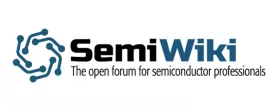If an Intel 10nm transistor fell in the ARM forest
Intel’s news at IDF this week about partnering with ARM for foundry services on 10nm set off some wild speculation. It’s not a surprise that ARM would enable Intel – they’ve worked together before, ARM is an equal opportunity ecosystem partner, and ARM has publicly announced 10nm cores taped out at TSMC. Of more interest is what is actually could be in this for Intel.
Mark Bohr, Intel’s manufacturing guru, issued pretty much the same pitch he’s used for a couple of years this week: our 10nm process is obviously superior to anyone else’s, based primarily on a 54nm gate pitch claimed to be several years ahead that translates to a density advantage and a lower cost per transistor. That’s important when you need billions of transistors to get something done, like the next-generation Cannonlake microarchitecture.
To read the full article, click here
Related Semiconductor IP
- Ultra-Low-Power LPDDR3/LPDDR2/DDR3L Combo Subsystem
- 1G BASE-T Ethernet Verification IP
- Network-on-Chip (NoC)
- Microsecond Channel (MSC/MSC-Plus) Controller
- 12-bit, 400 MSPS SAR ADC - TSMC 12nm FFC
Related Blogs
- Further Delays for Intel 10nm?
- Intel to Skip 10nm to Stay Ahead of TSMC and Samsung?
- Intel 10nm
- Want 10nm Wafers? That'll Cost You
Latest Blogs
- Rivian’s autonomy breakthrough built with Arm: the compute foundation for the rise of physical AI
- AV1 Image File Format Specification Gets an Upgrade with AVIF v1.2.0
- Industry’s First End-to-End eUSB2V2 Demo for Edge AI and AI PCs at CES
- Integrating Post-Quantum Cryptography (PQC) on Arty-Z7
- UA Link PCS customizations from 800GBASE-R Ethernet PCS Clause 172
